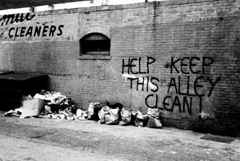by Joelle Steele

I have always loved photographs, but I have never wanted to collect them. Instead, I have several books on photography or on photographs by certain photographers or of certain places or subject matter. I’m always drawn to things French, so I have books of old photographs of Paris by French photographers.
I also liked taking photos, and my mother gave me her old Ansco camera when I was nine years old. The first photo I took with it was of Lone Cypress in Pebble Beach, and I still have the little original (framed). Up until about 2004, I almost never left the house without a camera.
Over the years I’ve owned many different cameras, including a 35mm Minolta, Pentax, and Rollei. The Rolleis were my favorite cameras, with their crisp Zeiss lenses. I had three of them that were old at the time and I bought them used. One was a 35mm SLR, one was a Rollei that shot small square negatives, and one was a Rolleiflex TLR (twin lens reflex) that was my all-time favorite camera. Its large negative format produced the most beautiful photographs, picking up the tiniest of details with perfect clarity.
It is a shame that so many of my oldest and best art photos have been lost, the prints and negatives deteriorated due to improper storage in my earlier years. I sold some photographs to people who liked my work, but I never had my photos in galleries or shows.
It was in the 1980s that I actually made money shooting photos. I did headshots for wanna-be actors and musicians (d.b.a. as Hollywood Hot Shots), I also did artistic portraits of people, and I photographed portfolios for interior designers, landscape architects, and landscape designers. I also did illustrations and photographs for publishers, mostly of plants, landscapes, and cats.
In the early 1980s I met the late architectural photographer, Marvin Rand. He was known as a genius in the field and was especially known for his documentation of the city of Los Angeles. I met him when he was photographing a new restaurant and I was there making some large flower arrangements for the opening. We got to talking, and he told me how he felt about the artistry of photography, both in black-and-white and in color. His words had a huge impact on me, and I saw him several times over the next ten years. I was truly honored to listen to his opinions and thoughts on both the history and the future of photography.
While living on the Monterey Peninsula, I got to spend some time looking at historic photos when I made the acquaintance of the late Pat Hathaway (whose mother’s name was also Joelle). Pat was a photo archivist and owned California Views. He passed away in 2021, but I met him in 1999 when I was the webmaster for the Asilomar Conference Grounds in Pacific Grove and was looking for old photos for the history articles I was writing for their website. He was an interesting man who did an incredible job of collecting images of California, of the Monterey Peninsula in particular, and documenting the history of the area.
As for restoring photographs, I got interested in this back in my darkroom days. Not that I ever had my own darkroom, but I used to rent them by the hour from a man named Ed Weiss. He had a large studio in Los Angeles and had formerly worked doing still photos for the big studios during the 1940s-60s. He taught me the ins and outs of restoring old photographs by reproducing and retouching them. This sounds so incredibly old-fashioned. Nowadays, I do it all in Photoshop software and it is so much faster and easier, and the result is far superior to what could be done in the darkroom (or else I just never did it as well in the darkroom).
One of the advantages of Photoshop and other online photo editing software is that you can do more than just retouch a photo. You can actually repair a severely damaged photo and even reconstruct missing/damaged parts of that photo. I have reconstructed ears, eyes, and mouths. I have even reconstructed half of a face on a couple of occasions.
I also liked to experiment with using artistic methods to enhance photographs. I did a lot of hand-tinting of photos in the 1990s. I staged still lifes and tinted those, but I also took some of my older black-and-white photos and tinted them. I used color inks and watercolors at first, but found them too difficult to work with. I had a lot of Rit powder dyes left over from the days when I was decorating clothes and shoes ten years earlier, and decided to give them a try instead. The results were much better, probably because the dyes were absorbed better into the photo media. Also, with the dyes, I could get much better variations in the tint, ranging from very subtle colorations to more vibrant ones.

I also enjoyed taking photographs of landscapes and architecture. For about fifteen years I photographed the landscapes done by landscape contractors for use in their portfolios. I also liked to photograph landscapes in general. I love nature, and to me almost anything in nature is worthy of a photograph. Over the years I’ve taken lots of photographs of flowers and of small things in natures. And lots of photographs in the many places where I lived or visited, especially the Monterey Peninsula. So many of these photos represent places and things that are now long gone. I have sold quite a few of them in a stock photo collection on my website.
